The nuclear weapons test is 76 years old
Categories: Catastrophes | History
By Pictolic https://pictolic.com/article/the-nuclear-weapons-test-is-76-years-old.htmlSince the first atomic explosion, codenamed "Trinity", on July 16, 1945, almost two thousand tests of atomic bombs have been carried out, most of them took place in the 60s and 70s. When this technology was new, tests were carried out often, and they were something else. All of them led to the development of newer and more powerful nuclear weapons. But since the 1990s, governments of various countries have begun to limit future tests — take, for example, the US moratorium and the UN Comprehensive Nuclear-Test-Ban Treaty. Should we behave like masters with our stocks of nuclear weapons?
We have collected photos of the first 30 years of atomic bomb tests.

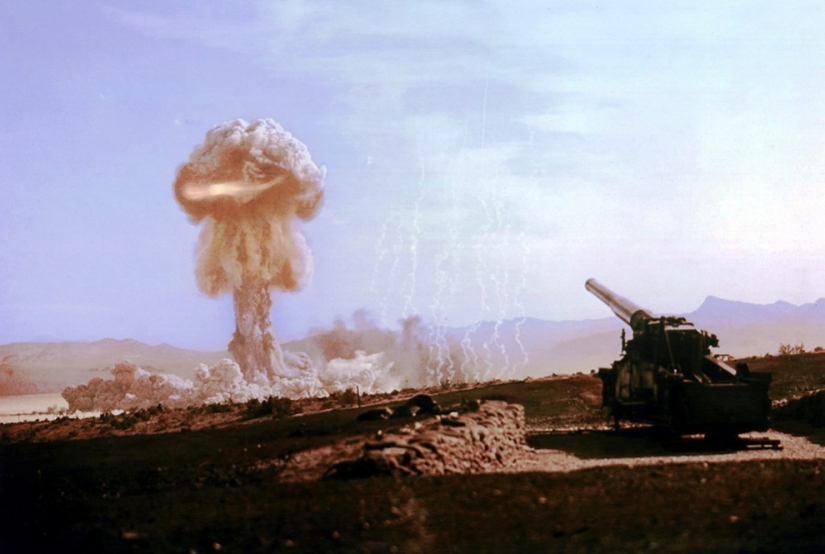
The Upshot-Knothole Grable nuclear test explosion in Nevada on May 25, 1953. The 280-millimeter nuclear projectile flew out of the M65 cannon, detonated in the air-about 150 meters above the ground — and produced an explosion with a capacity of 15 kilotons. (U.S. Department of Defense)
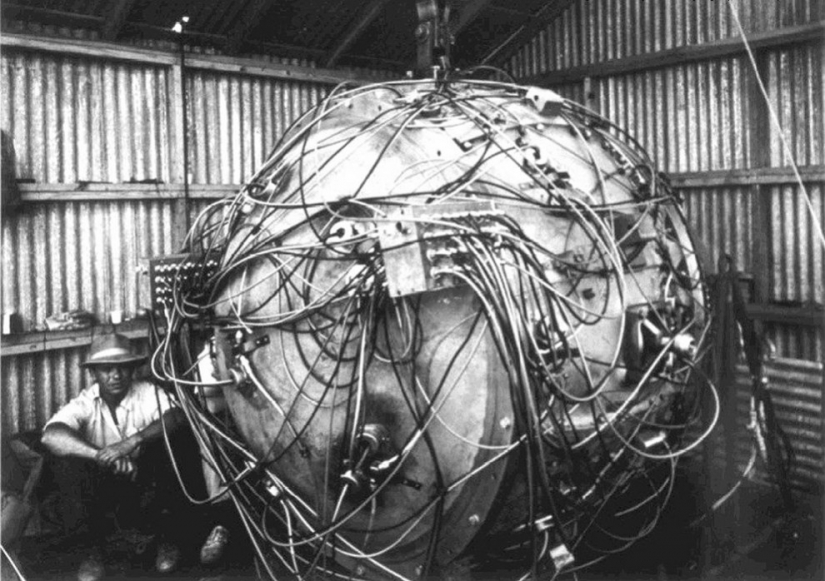
Open wiring of a nuclear device codenamed The Gadget (unofficial name of The Trinity project) — the first test atomic explosion. The device was prepared for an explosion that occurred on July 16, 1945. (U.S. Department of Defense)
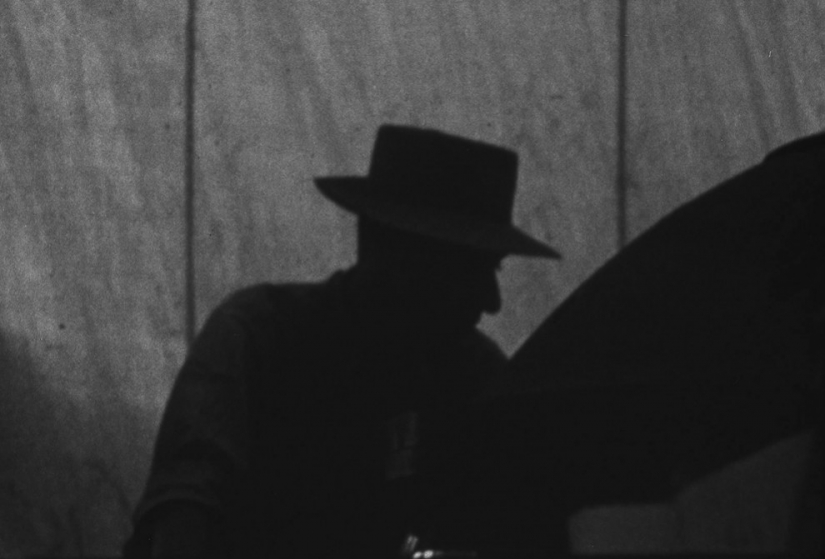
The shadow of the director of the Los Alamos National Laboratory, Jay Robert Oppenheimer, overseeing the assembly of the Gadget projectile. (U.S. Department of Defense)
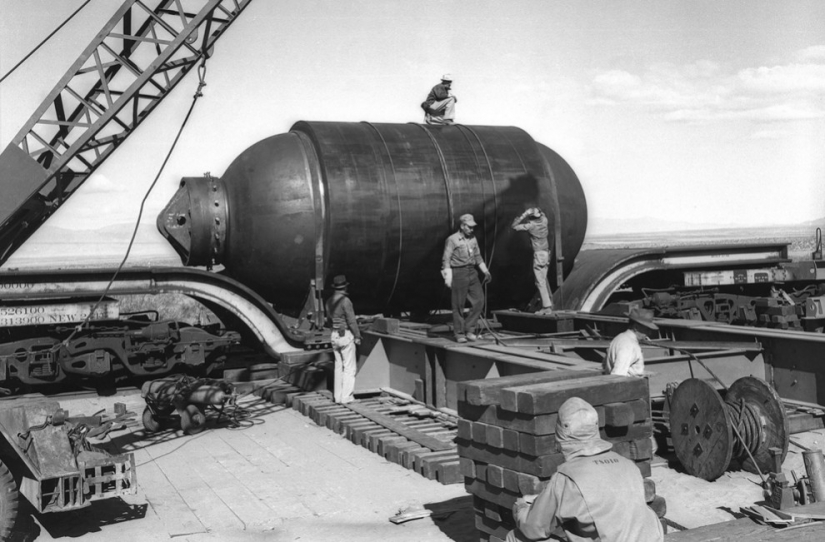
The 200-ton Jumbo steel container used in the Trinity project was made to recover plutonium, if the explosive substance suddenly does not start a chain reaction. As a result, Jumbo was not useful, but it was placed near the epicenter to measure the consequences of the explosion. Jumbo survived the explosion, which can not be said about his supporting frame. (U.S. Department of Defense)
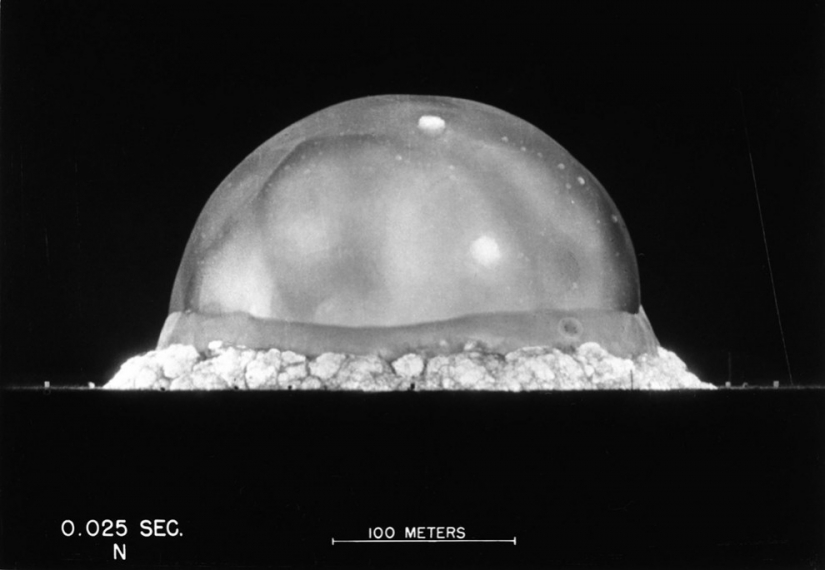
The growing fireball and the blast wave of the Trinity explosion 0.025 seconds after the explosion on July 16, 1945. (U.S. Department of Defense)
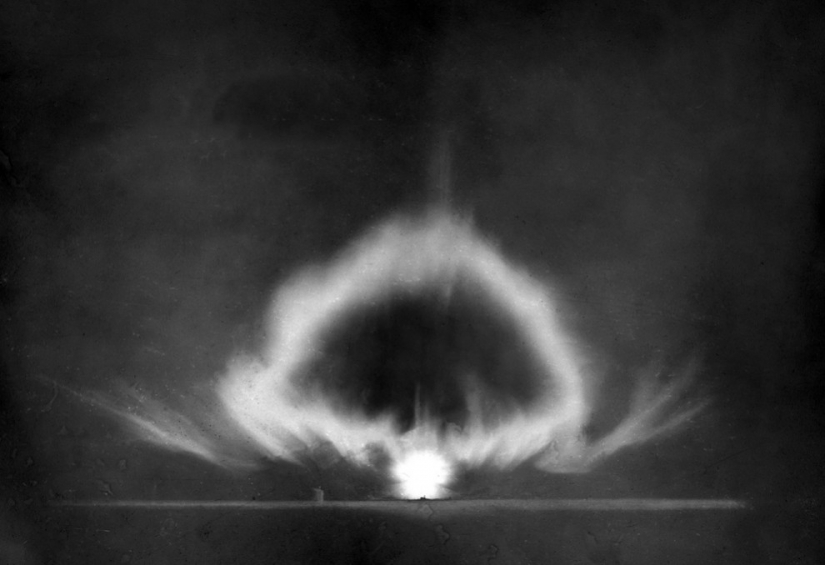
Photo of the Trinity explosion with a long exposure a few seconds after detonation. (U.S. Department of Defense)
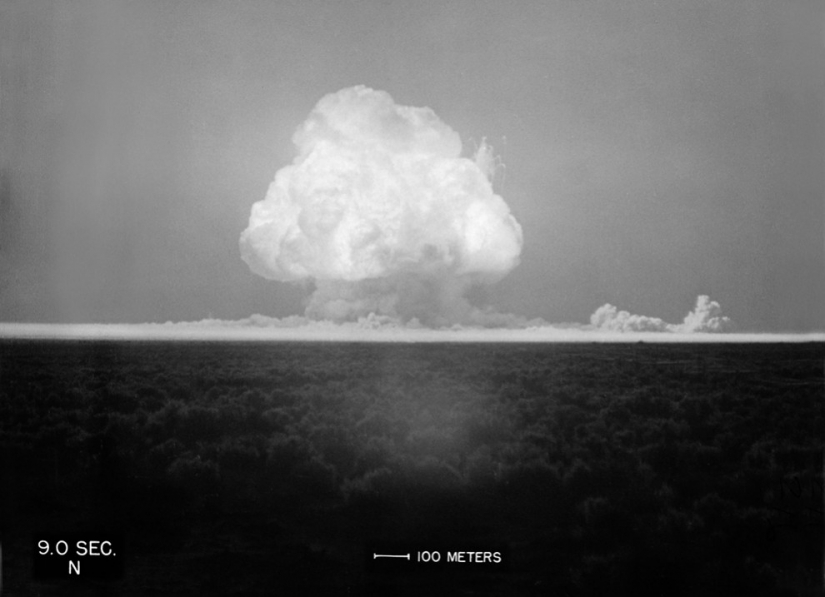
The fireball of the "fungus" of the first atomic explosion in the world. (U.S. Department of Defense)

The US military watches an explosion during Operation Crossroads on Bikini Atoll on July 25, 1946. It was the fifth atomic explosion after the first two test and two atomic bombs dropped on Hiroshima and Nagasaki. (U.S. Department of Defense)
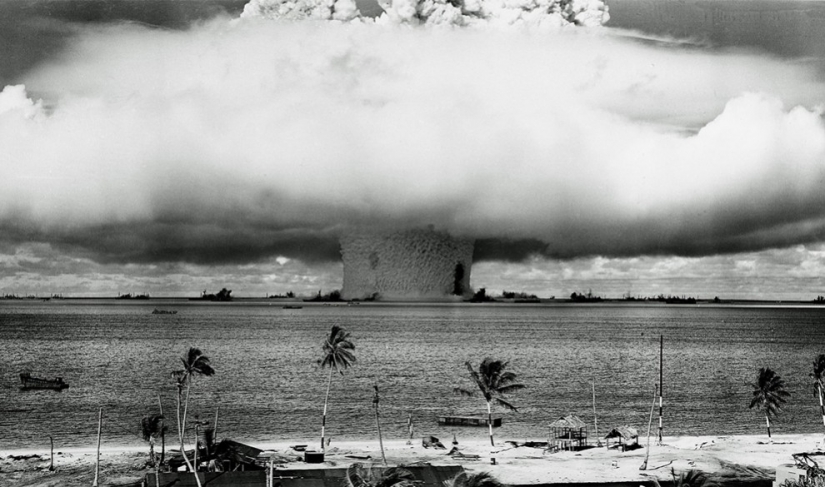
A nuclear mushroom and a column of spray in the sea during a nuclear bomb test at Bikini Atoll in the Pacific Ocean. This was the first underwater atomic test explosion. After the explosion, several former warships ran aground. (AP Photo)

A huge nuclear mushroom after a bomb explosion on Bikini Atoll on July 25, 1946. The dark dots in the foreground are ships placed specifically in the path of the blast wave to check what it will do to them. (AP Photo)
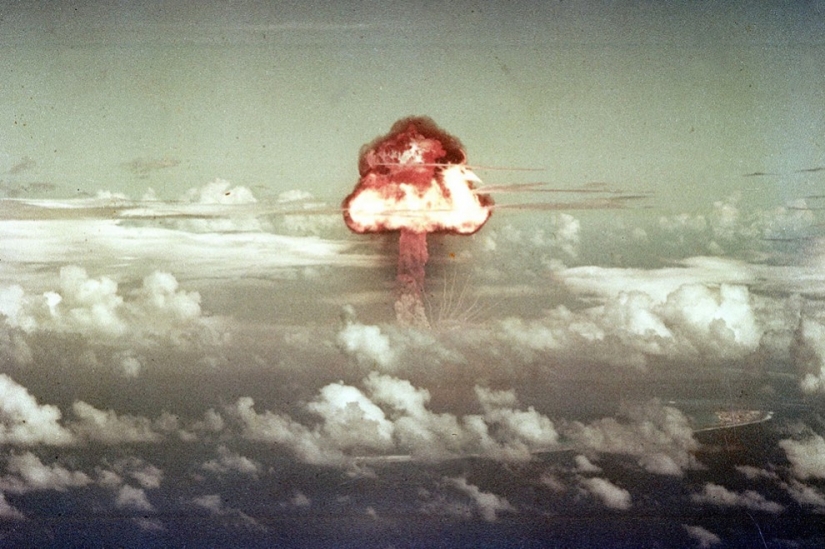
On November 16, 1952, a B-36H bomber dropped an atomic bomb on the northern part of Runit Island on Eniwetok Atoll. The result was an explosion with a capacity of 500 kilotons and a diameter of 450 meters. (U.S. Department of Defense)
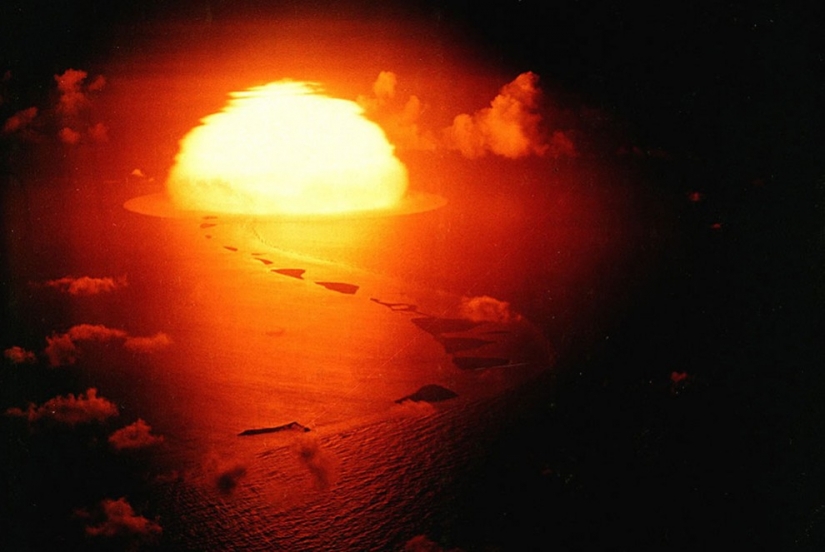
Operation Greenhouse took place in the spring of 1951. It consisted of four explosions at the Pacific Nuclear Test site in the Pacific Ocean. This is a photo of the third test, codenamed "George", conducted on May 9, 1951. It was the first explosion in which deuterium and tritium were burned. Power — 225 kilotons. (U.S. Department of Defense)
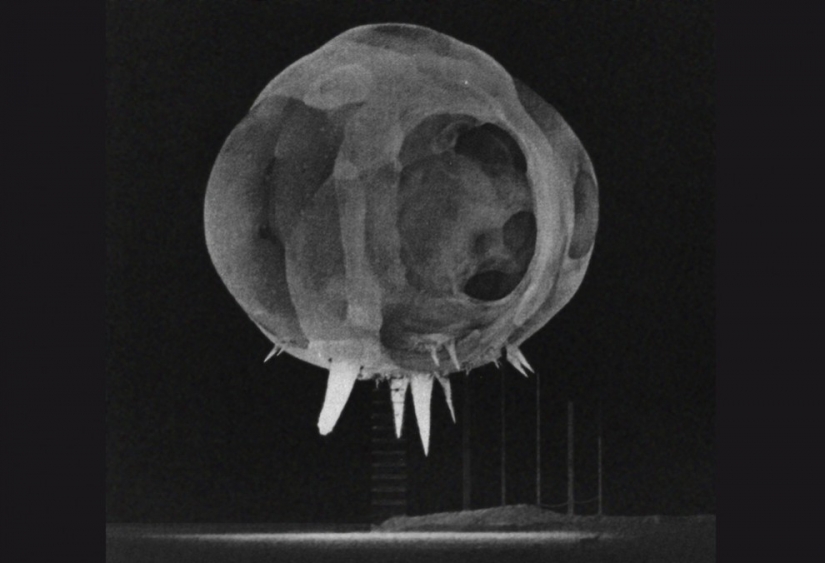
"Rope tricks" of a nuclear explosion, captured less than one millisecond after the explosion. During Operation Tumblr-Snapper in 1952, this nuclear device was suspended 90 meters above the Nevada Desert on mooring cables. As the plasma spread, the radiated energy overheated and vaporized the cables over the fireball, as a result of which these "spies" turned out. (U.S. Department of Defense)
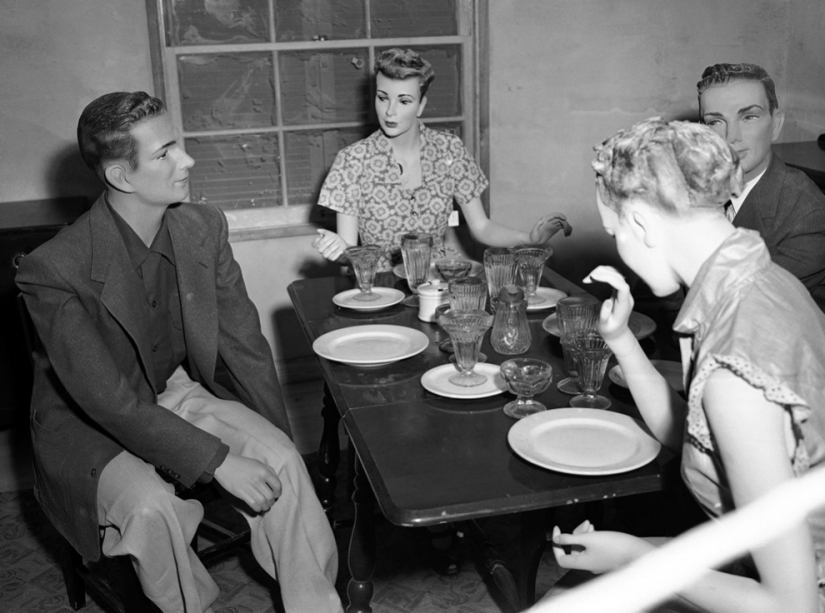
During Operation Upshot-Nothole, a group of mannequins were planted in the dining room of the house to test the effect of a nuclear explosion on houses and people. March 15, 1953. (AP Photo/Dick Strobel)

That's what happened to them after the nuclear explosion. (U.S. Department of Defense)
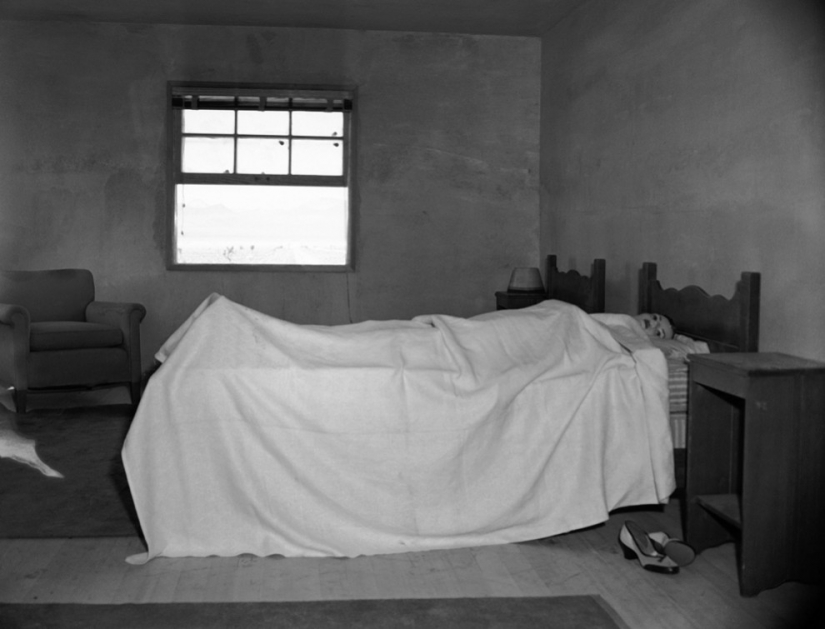
In the same house number two on the second floor, another mannequin was lying on the bed. In the window of the house, a 90-meter steel tower is visible, on which a nuclear bomb will soon explode. The purpose of the test explosion is to show people what will happen if a nuclear explosion occurs in an American city. (AP Photo/Dick Strobel)
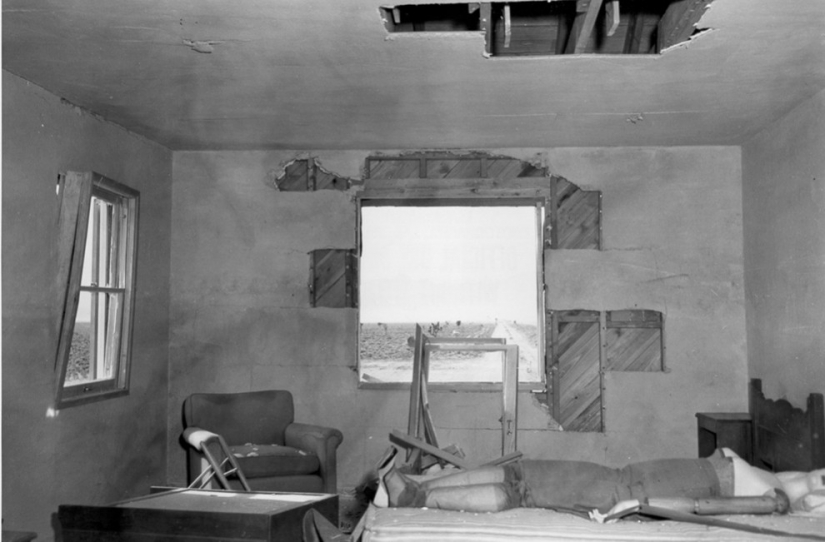
A damaged bedroom, windows and blankets that disappeared to nowhere after the test explosion of an atomic bomb on March 17, 1953. (U.S. Department of Defense)
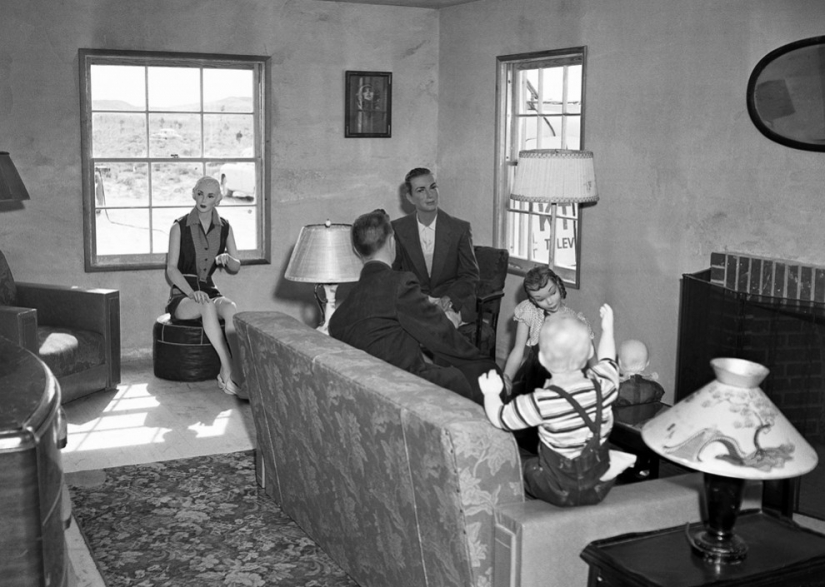
Mannequins representing a typical American family in the living room of test house No. 2 on the territory of the Nevada nuclear test site. (AP Photo)

The same "family" after the explosion. Someone was scattered all over the living room, someone just disappeared. (U.S. Department of Defense)
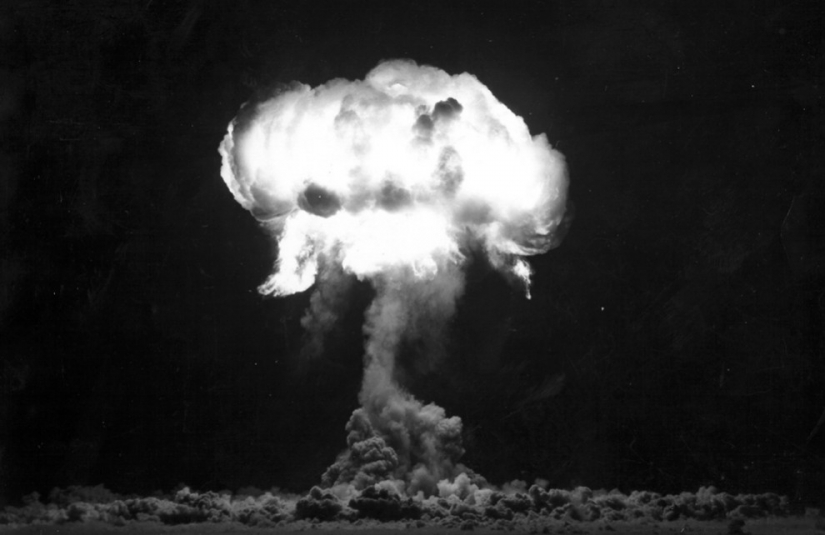
During Operation Plumb Line at the Nevada nuclear test site on August 30, 1957, a projectile detonated from a balloon in the Yucca Flat desert at an altitude of 228 meters. (National Nuclear Security Administration / Nevada Site Office)
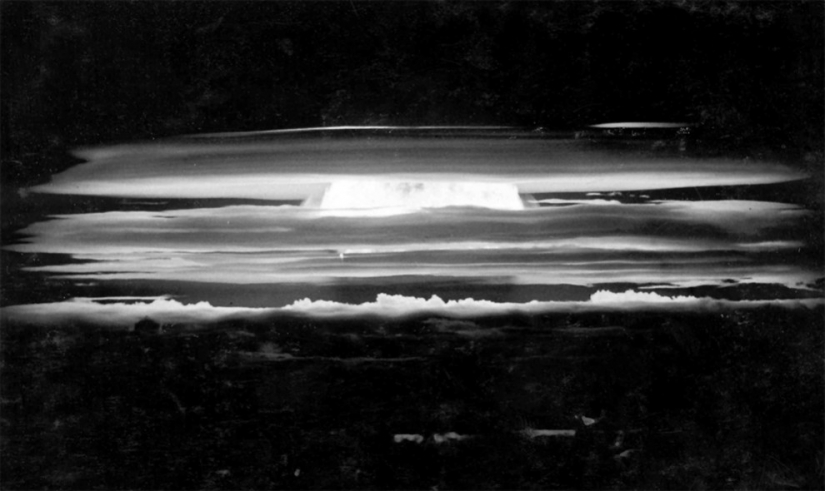
Test explosion of a hydrogen bomb during Operation Redwing over Bikini Atoll on May 20, 1956. (AP Photo)
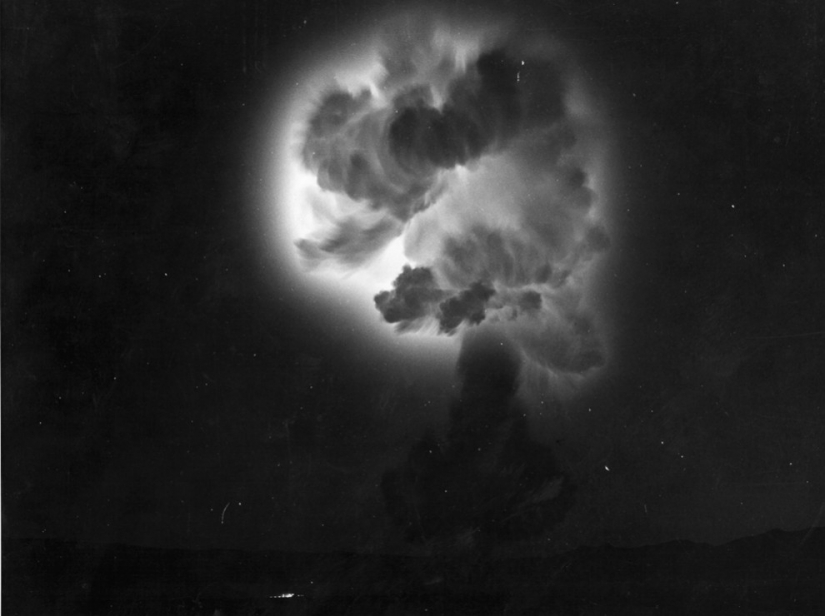
An ionization glow around a cooling fireball in the Yucca Desert at 4: 30 am on July 15, 1957. (National Nuclear Security Administration / Nevada Site Office)

The flash of an exploding nuclear warhead of an air-to-air missile at 7: 30 am on July 19, 1957 at the Indian Springs Air Base, 48 km from the explosion site. In the foreground — the same type of aircraft "Scorpion". (National Nuclear Security Administration / Nevada Site Office)
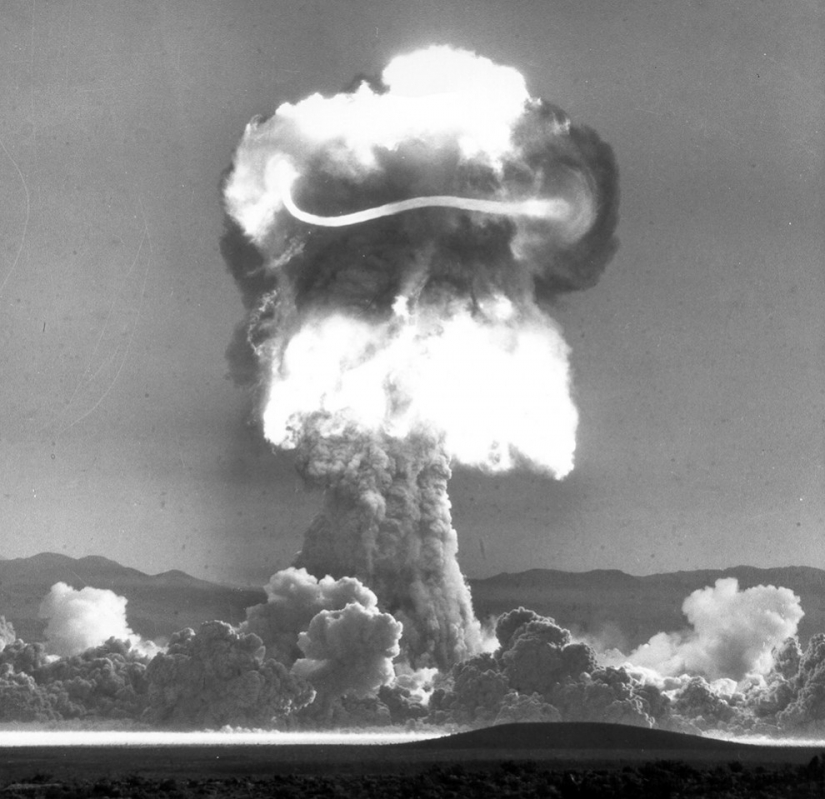
The fireball of the Priscilla projectile on June 24, 1957 during a series of operations "Plumb". (National Nuclear Security Administration / Nevada Site Office)
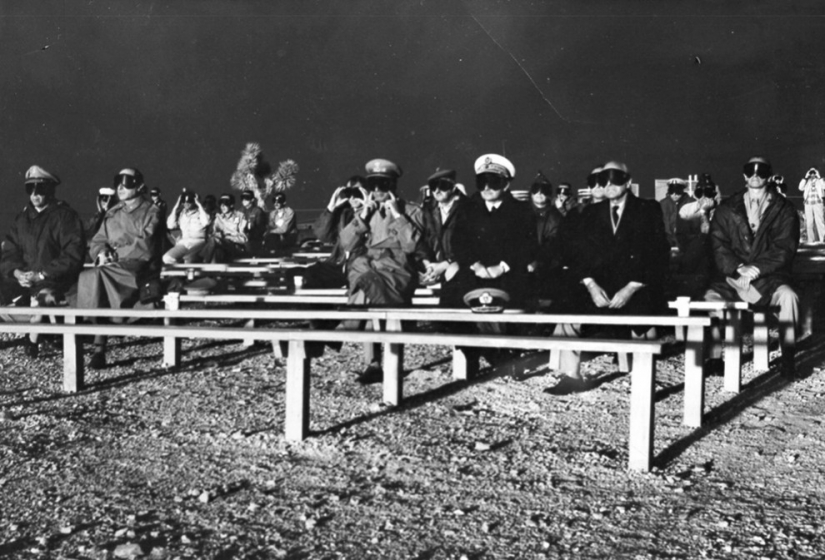
NATO representatives observe an explosion during Operation Boltzmann on May 28, 1957. (National Nuclear Security Administration / Nevada Site Office)
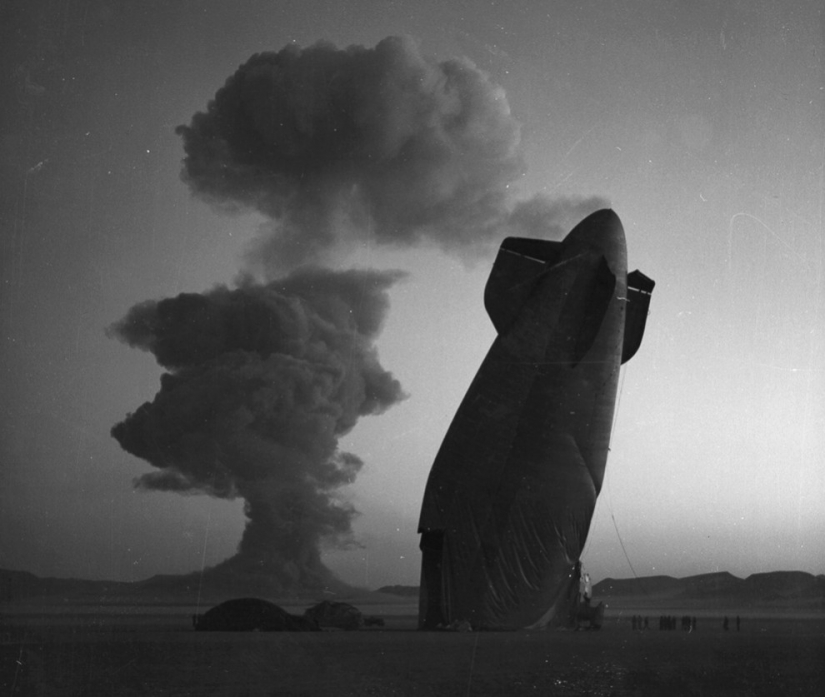
The tail section of an American Navy airship after a nuclear weapons test in Nevada on August 7, 1957. The airship was floating in free flight, more than 8 km from the epicenter of the explosion, when it was overtaken by an explosive wave. There was no one in the airship. (National Nuclear Security Administration / Nevada Site Office)
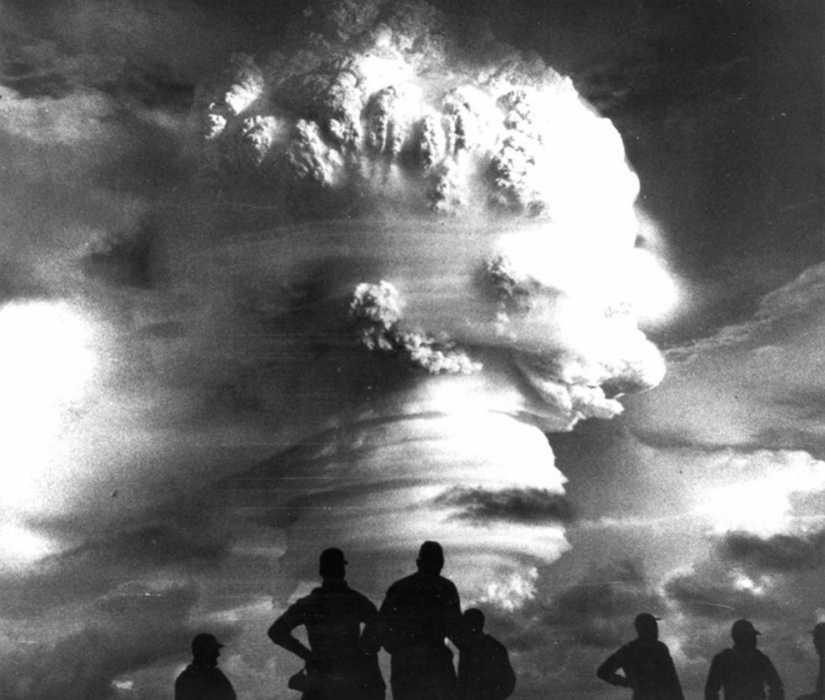
Observers during Operation Hardtack I - the explosion of a thermonuclear bomb in 1958. (National Nuclear Security Administration / Nevada Site Office)
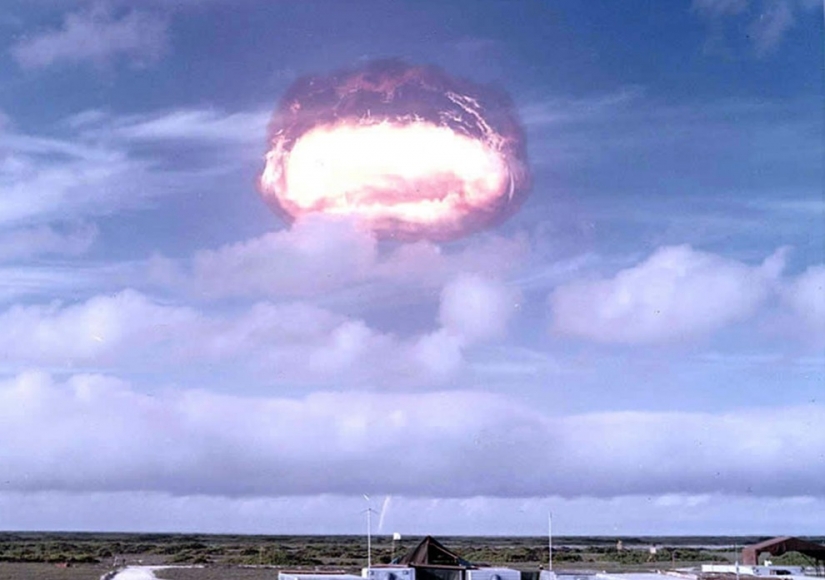
The Arkansas tests are part of Operation Dominic, a series of more than a hundred explosions in Nevada and the Pacific Ocean in 1962. (U.S. Department of Defense)

The fireball of the Aztec test test, which is part of Operation Dominic in Nevada. (U.S. Department of Defense)
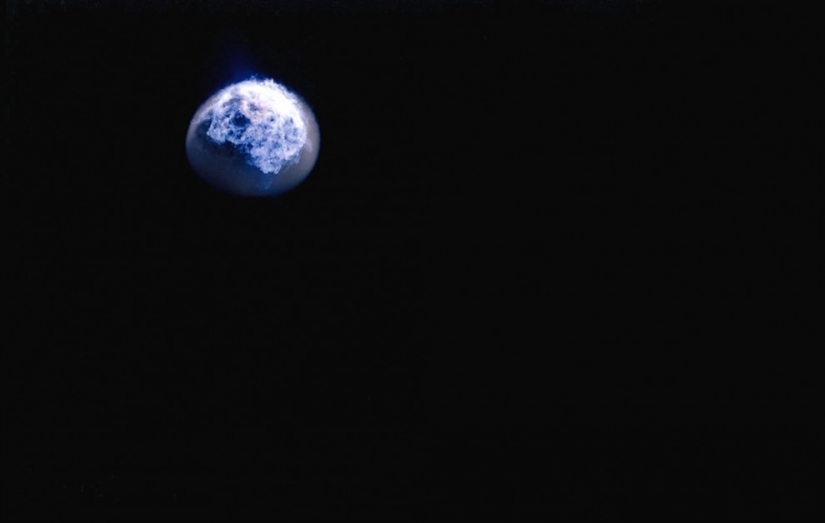
Part of a series of high-altitude nuclear tests Fishbowl Bluegill-an explosion with a capacity of 400 kilotons in the atmosphere, at an altitude of 48 km above the Pacific Ocean. Top view. October 1962. (U.S. Department of Defense)
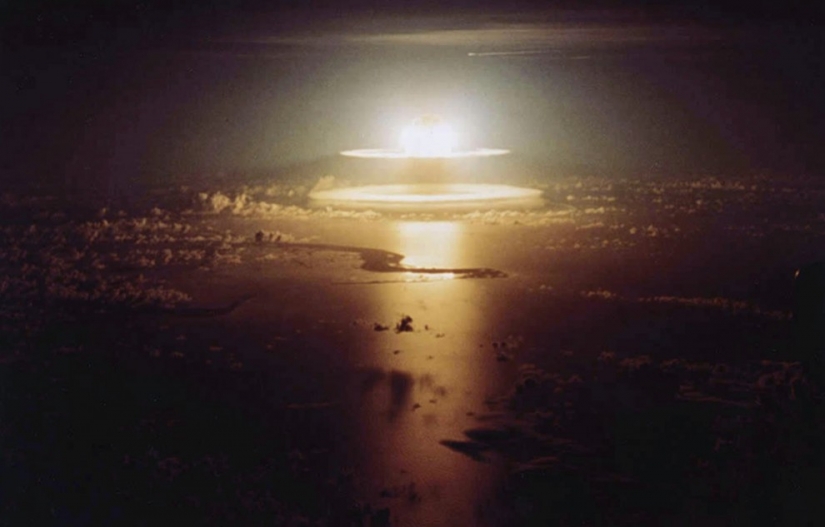
Rings around a nuclear mushroom during the Yeso test project in 1962. (U.S. Department of Defense)
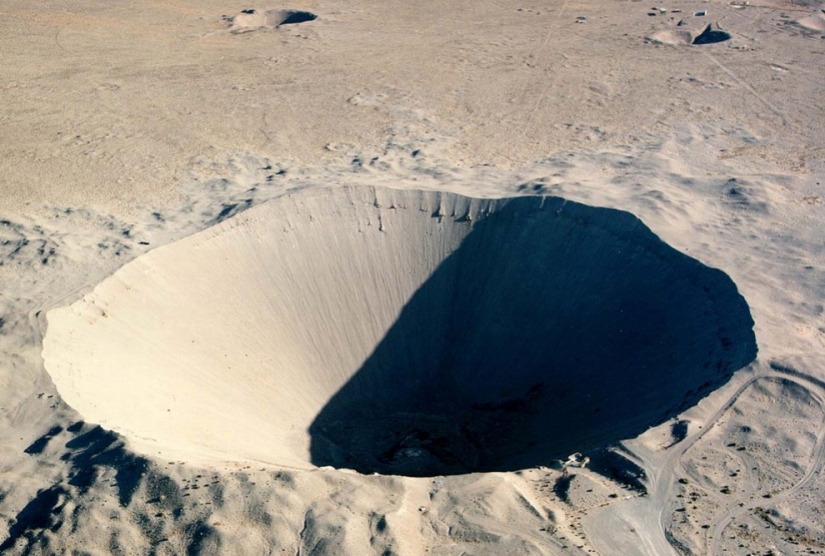
Sedan crater was formed after the explosion of 100 kilotons of explosives at a depth of 193 meters under the loose sediments of the desert in Nevada on July 6, 1962. The crater turned out to be 97 meters deep and 390 meters in diameter. (National Nuclear Security Administration / Nevada Site Office)
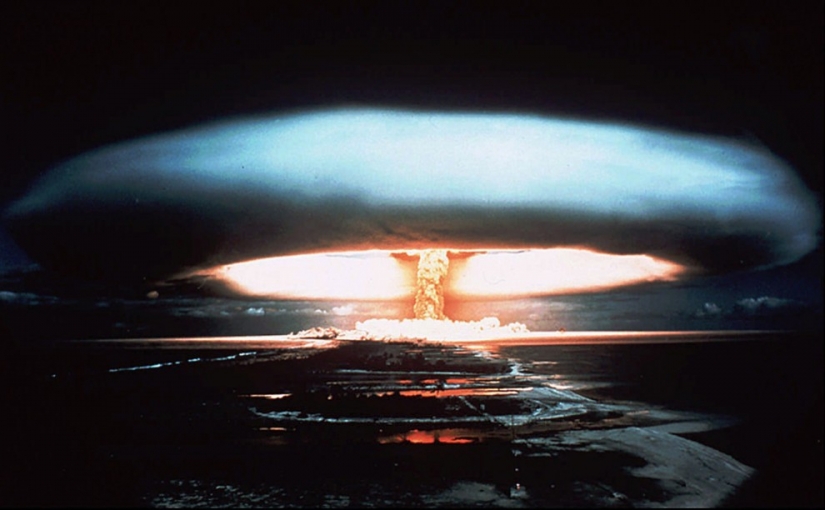
Photo of the French government's nuclear explosion on Mururoa Atoll in 1971. (AP Photo)
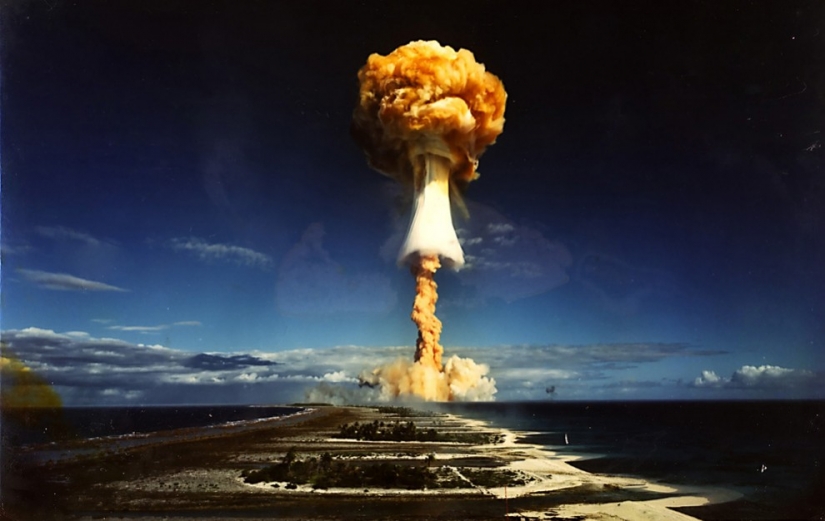
The same nuclear explosion on Mururoa Atoll. (Pierre J. / CC BY NC SA)
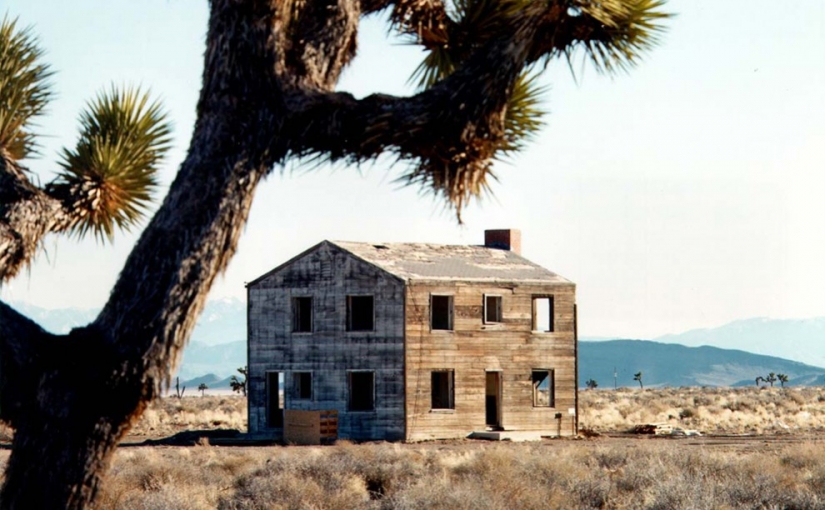
The "surviving city" was built 2286 meters from the epicenter of a nuclear explosion with a capacity of 29 kilotons. The house remained almost intact. The "surviving city" consisted of houses, office buildings, shelters, power sources, communications, radio stations and "residential" vans. The test, codenamed Apple II, took place on May 5, 1955. (U.S. Department of Defense)
Keywords: Explosion | History | Nuclear weapons | Bomb | Disasters | Tests | Atomic bomb
Post News ArticleRecent articles

This is for us, people, the New Year is one of the most important holidays of the year. But for animals, it's all a fuss, running ...

A couple of years ago, Saudi Arabia officially banned celebrating the New Year. But this state is far from the only one where our ...
Related articles

When a person is in a life-threatening situation is awful, but even worse when it happens to a child. 11-year-old American Terry ...

Remember how broke the "unbreakable" scoop? The photo preserved in the photo album of almost every family! A selection of vintage ...

The age of breeding" improvements " of pure breeds has turned once healthy dogs into deformed animals. There is an opinion that ...

While the sun practically disappeared from the sky above the Arctic Circle and the night seemed endless, the Vikings prepared to ...